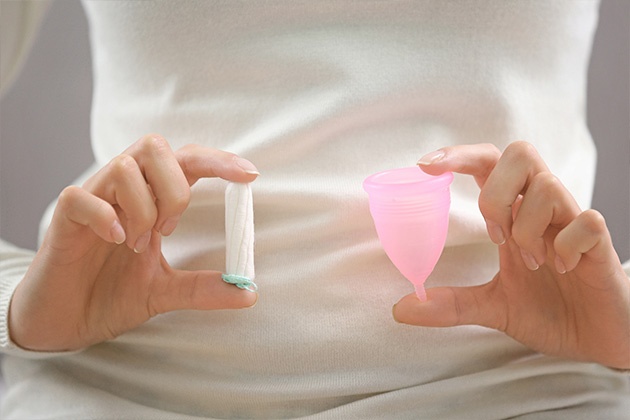Women need safe, effective and comfortable sanitary products for menstrual management. New study summarizes that menstrual cups are safe, reliable, acceptable yet low-cost and environment-friendly alternative to existing sanitary products like tampons. Enabling menstruating girls and women to make informed choices on sanitary products can help them lead good and healthy lives.
Menstruation is a normal body function in a healthy girl or woman. Around 1.9 billion women worldwide are of menstruating age and every woman spends up to 2 months in a year in handling menstrual blood flow. Various sanitary products are available like sanitary pads and tampons which absorb blood, and a menstrual cup which usually collects blood and will need to be emptied between 4-12 hours as this depends upon blood flow and type of cup used. Two types of such cups are available – bell-shaped vaginal cup and a cervical cup which is placed around cervix similar to a diaphragm. These cups are made up of medically-used silicon, rubber or latex. They are reusable and can last up to a decade, though some single use options are also available. All women require reliable, safe and comfortable menstrual products as poor quality products result in leakage and chaffing and their usage directly affects health.
A very limited number of studies have compared existing sanitary products. A new study published on July 16 in The Lancet Public Health aimed to evaluate the safety, practicality, availability, acceptability and cost factors of using a menstrual cup. Menstrual cups have been around since 1930s but awareness about them is very low even in high-income countries. In their study, researchers compiled and reviewed 43 academic studies involving 3,300 women and girls who self-reported their experience of menstrual cup usage. Researchers also collected information from manufacturer and user experience database for events on menstrual cup usage. Examining menstrual blood leakage when using a cup was primary. Also, safety issues and adverse events were evaluated. Costs, availability and environmental savings were estimated. Information was assessed for low, middle-income and high-income countries.
Analysis showed that menstrual cups are a safe and effective option for menstrual management just like other sanitary products and that lack of familiarity is the biggest hurdle in menstrual cup usage. This product is never mentioned on any educational websites which discuss puberty in girls. Leakage in menstrual cups was similar or less compared to other sanitary products and rates of infection are similar or lower for menstrual cups. Preference for menstrual cups was seen to be high in different countries and even in low income countries, resource constrained setting was not a deterrent. Different brands are available in 99 countries costing between 72 cents to USD 50. Using reusable menstrual cups also has major environmental and cost benefits as plastic waste can be drastically reduced.
The current study summarizes information on leakage, safety, acceptability of menstrual cups in comparison with available sanitary products. The study emphasizes that menstrual cups are a safe, reliable and acceptable option in low, middle-income and high-income countries. Enabling women to make informed choices about sanitary products for menstrual management can help them to live a healthy and productive lives.
***
{You may read the original research paper by clicking the DOI link given below in the list of cited source(s)}
Source(s)
Anna Maria van Eijket al. 2019. Menstrual cup use, leakage, acceptability, safety, and availability: a systematic review and meta-analysis. The Lancet Public Health. https://doi.org/10.1016/S2468-2667(19)30111-2




































